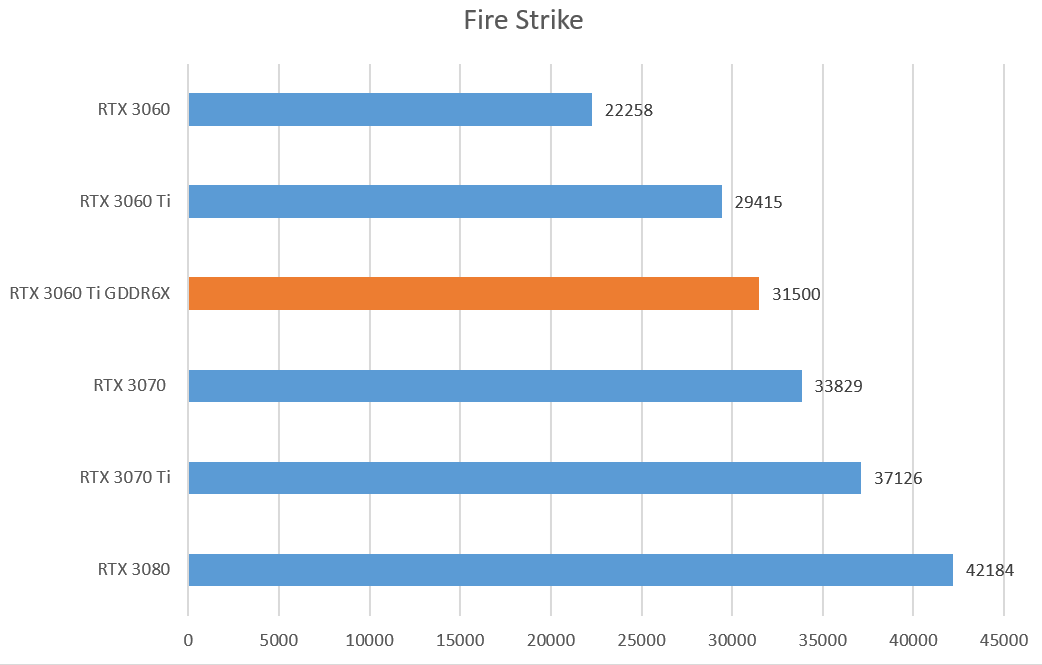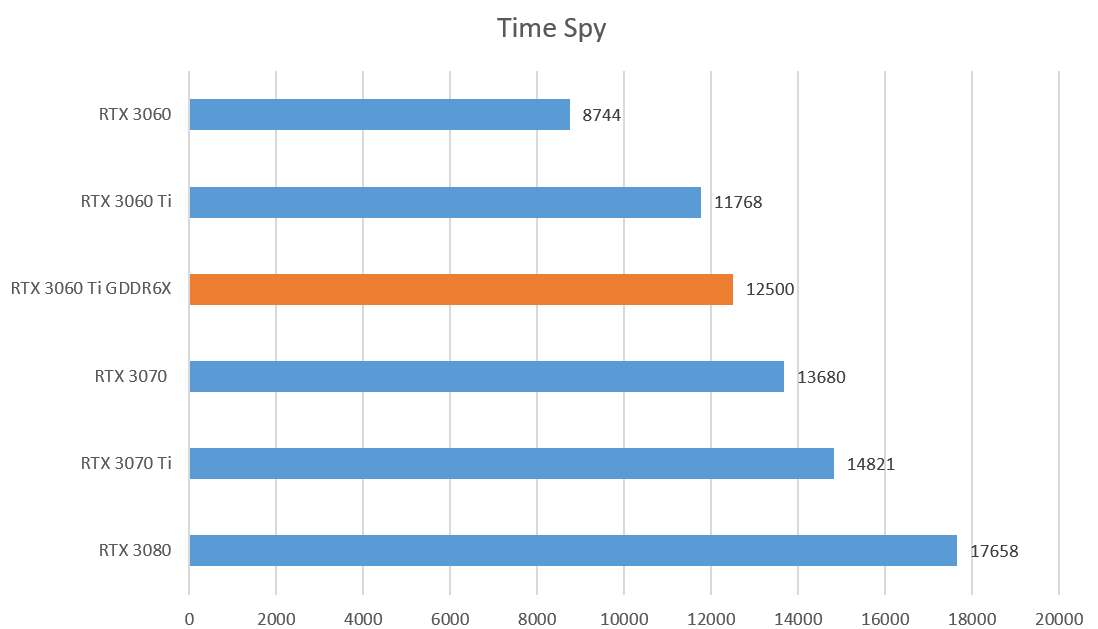The RTX 3060 Ti GDDR6X
NVIDIA’s RTX 3060 Ti refresh is equipped with the GA104-202 GPU paired with 8GB of G6X memory. The memory bandwidth has increased by almost 35% (14Gbps -> 19Gbps) owing to the G6X upgrade. This nets us an effective bandwidth of around 608GB/s. To see if this bandwidth increase leads to better performance, this GPU was tested in 3DMark. For the time being, we have 2 benchmarks; one from 3DMark Time Spy (Non-Extreme) and the other from 3DMark Fire Strike. The RTX 3060 Ti scores around 315XX points in Fire Strike and 125XX points in Time Spy. The ‘XX’ in the end represents a digit, so for the purpose of comparison, we’ll replace it by two 0s. As shown, the RTX 3060 Ti GDDR6X is almost 10% faster than the base variant. The G6X addition now makes it much closer to the RTX 3070. Time Spy sees the RTX 3060 Ti GDDR6X in lead by around 7-8%. The additional bandwidth will help in memory starved workloads.
Worth Your Money?
Currently, we do not have any official TDP or MSRP numbers for these refresh variants. NVIDIA has almost an year worth of Ampere inventory. This could be one of the reasons why the RTX 4000 series is priced so high. The Ada Lovelace powered budget GPUs may arrive in Q1 2023. Although, the pricing is extremely uncertain as of now. Besides, AMD’s RDNA3 is planned for announcement on the 3rd of November. Based on the leaks we compiled thus far, these GPUs can be up to almost 2.5x faster than last-gen. The budget-oriented RX 7600 XT is tipped to offer near 6900 XT levels of gaming performance at 1080p. Adding onto that, these Ampere refreshes are bound to be slower than or at least on par with either company’s next-gen offerings. However, if things go south and the prices for both Ada and RDNA3’s mid-ranged GPUs go through the roof, you can always opt for these GPUs as a fail-safe.
Benchmarks:
(RTX 3060 Ti G6X metrics via Videocardz)

